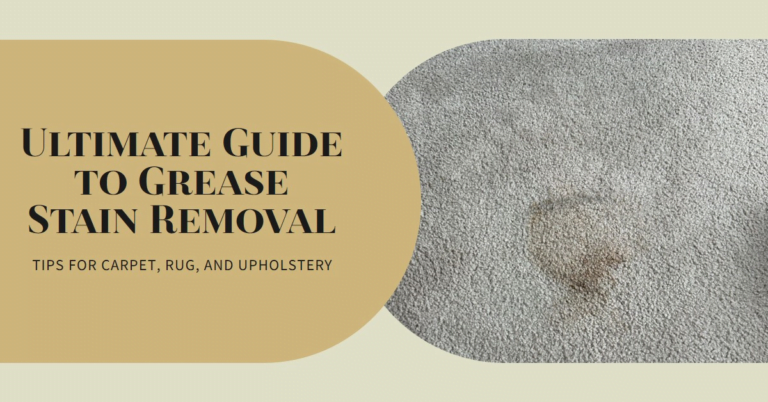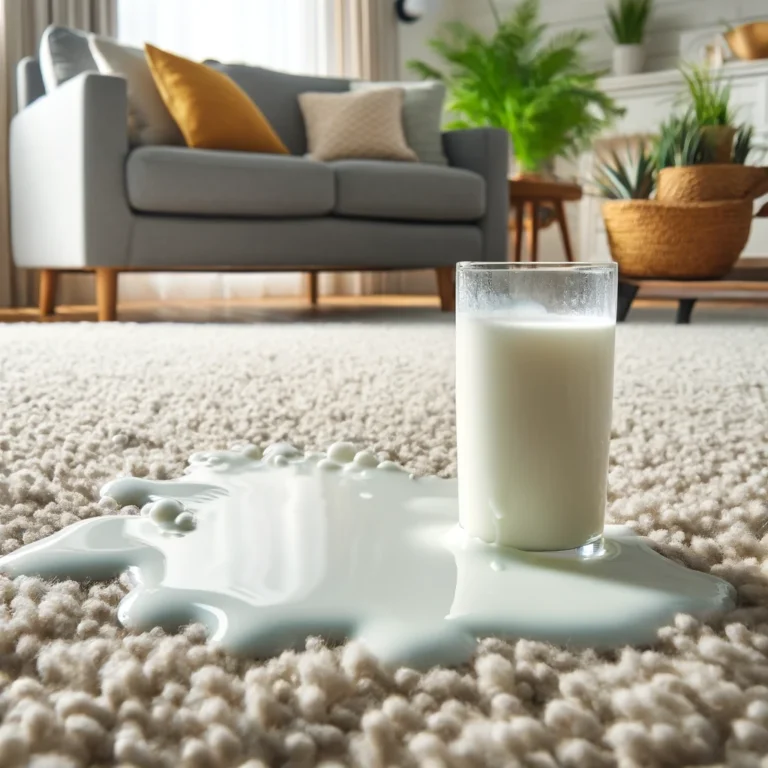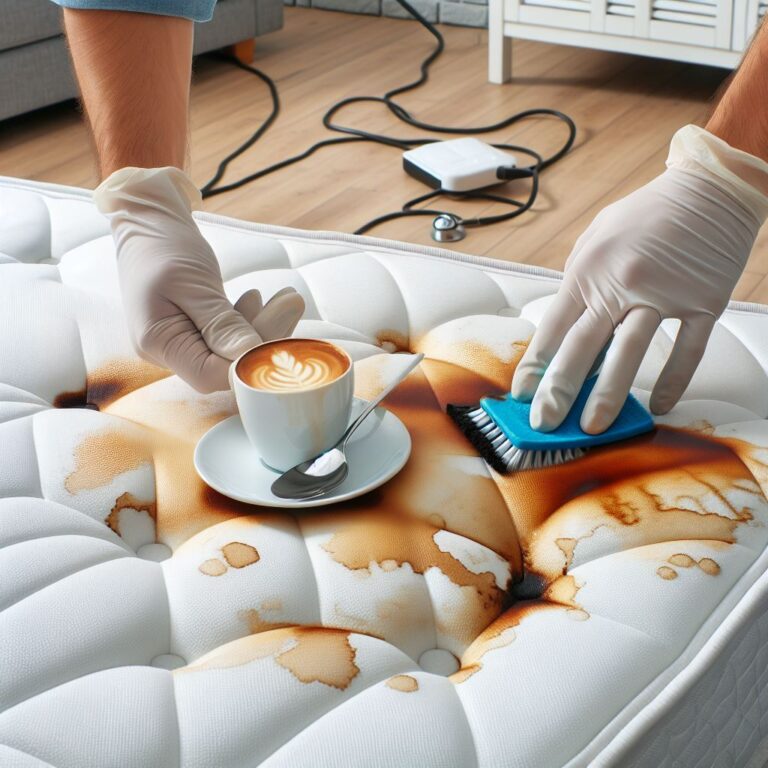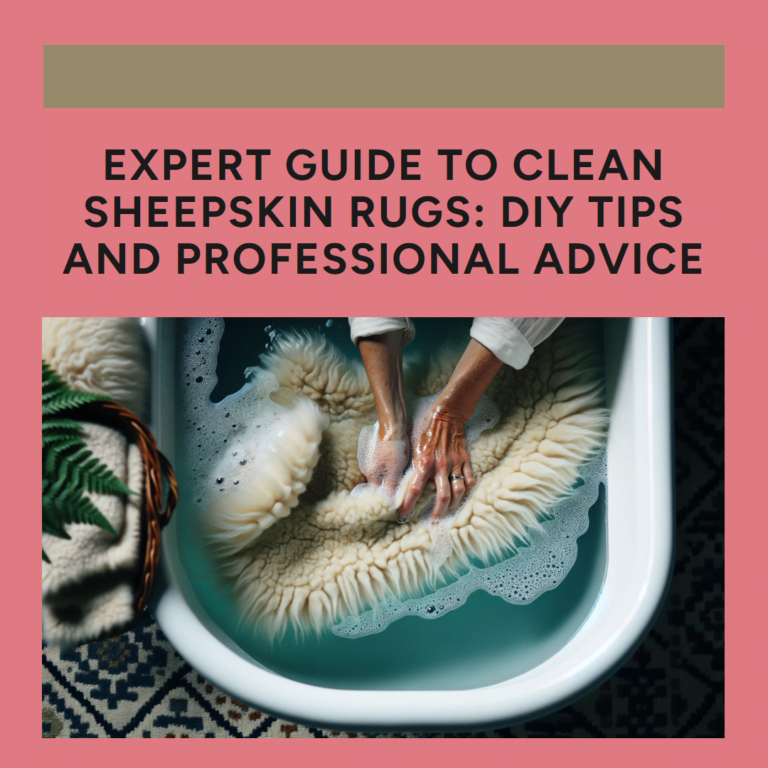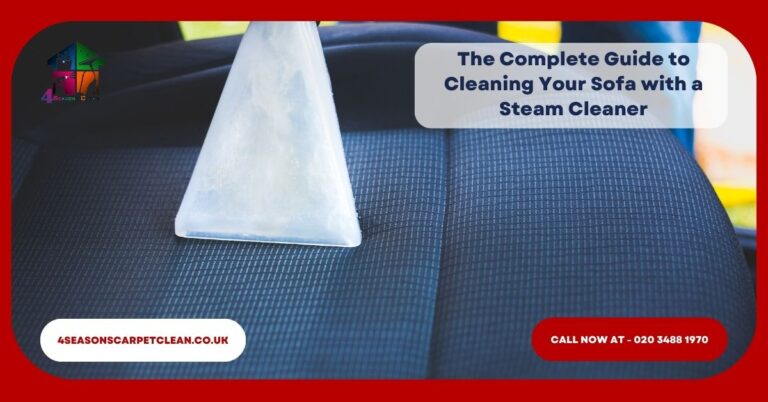Carpet stains are inevitable, but they must not be permanent. Knowing how to remove coffee spills, muddy footprints, or stubborn tar marks can help save your carpet and your sanity. This guide will show you easy DIY methods for cleaning common carpet stains, so your carpets stay clean and welcoming.
Cleaning Carpet Stains Yourself
Professional carpet cleaning methods, such as hot water extraction and dry chem absorbing, are effective. You can remove some stains at home. Here’s how to handle the most common carpet stains.
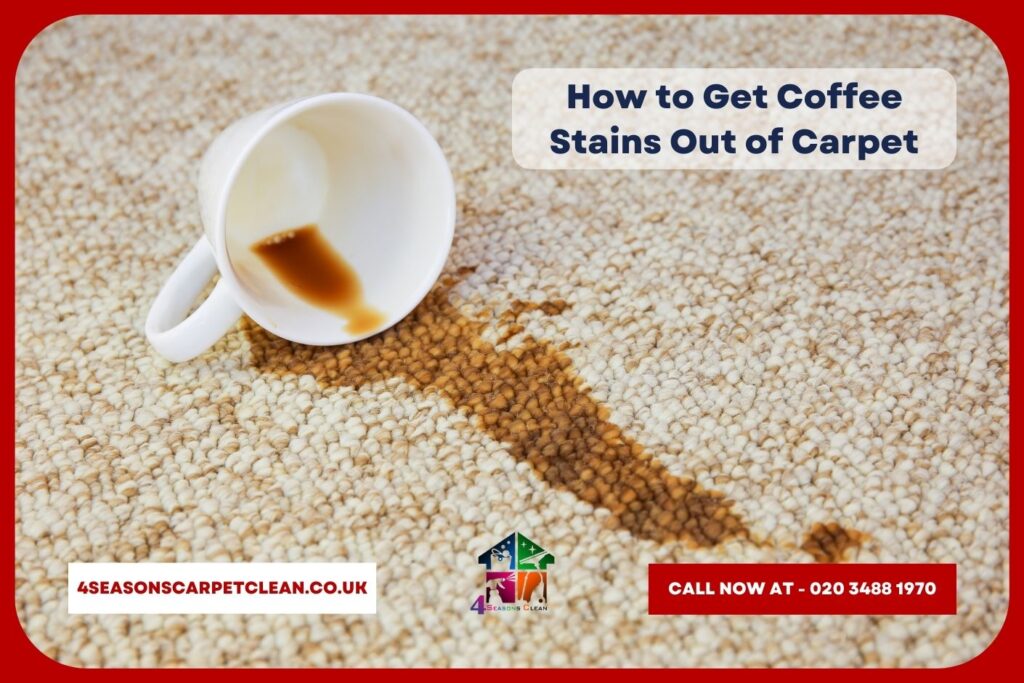
How to Get Coffee Stains Out of Carpet
Coffee stains can be particularly challenging because of their dark color. The key is to act quickly:
- Blot the Area: Use a clean cloth or napkin to blot the spill.
- Loosen Old Stains: If the stain is old, wet it with warm water to loosen it before blotting.
- Prepare Cleaning Solution: Mix dish soap and white vinegar with two cups of water.
- Scrub and Blot: Using a toothbrush, sponge, or microfiber cloth, rub the mixture into the stain and blot with a clean cloth. Keep repeating until you remove the stain.
- Rinse: Wet a clean cloth with cold water and remove any residue.
- Dry: Let the area air dry or use a blow dryer to speed up the process.
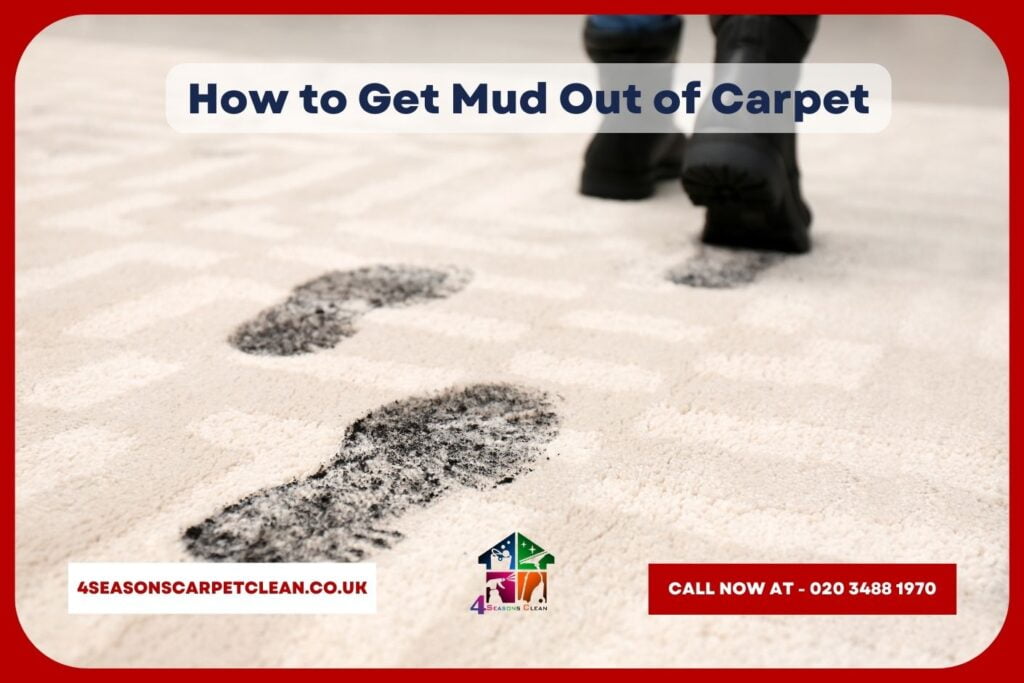
How to Get Mud Out of Carpet
Mud stains require a careful approach to avoid pushing dirt deeper into the carpet fibers:
- Remove Excess Mud: Use paper towels to blot up any liquid or pick up solid waste. Avoid rubbing.
- Vacuum: Once the mud is dry, vacuum the area in all directions using the hose attachment.
- Prepare Cleaning Solution: Mix a cup of water with a few drops of mild dish-washing detergent.
- Blot the Stain: Wet a clean cloth with the mixture and gently blot the stain. Switch to a clean part of the cloth as it gets dirty.
- Use Stain Remover: If needed, apply a commercial stain remover and dab with a clean cloth until you remove the stain.
- After cleaning, use a dry cloth to remove any leftover cleaning solution. Then rinse with water and let it dry completely.

How to Remove Tar from Carpet
Tar stains are tough, but these methods can help:
Using Household Cleaners
- Blot Immediately: Use an absorbent towel to remove as much tar as possible.
- Freeze the Tar: Hold an ice cube against the stain for a minute to harden it, then scrape off with a dull knife.
- Apply Cleaning Solution: Mix equal parts warm water and liquid dish washing detergent, apply to the stain, and blot.
- Rinse: Use a damp cloth to remove any cleaner residue.
Using Commercial Products
- Dry Cleaning Kit: Use a non-flammable dry cleaning fluid from a home dry cleaning kit.
- Dab with Cotton Ball: Soak a cotton ball in the fluid and dab the stain.
- Continue dabbing with clean cotton balls until you remove the tar.
- Solvent-Based Cleaner: If needed, use a solvent-based cleaner following the product’s instructions.
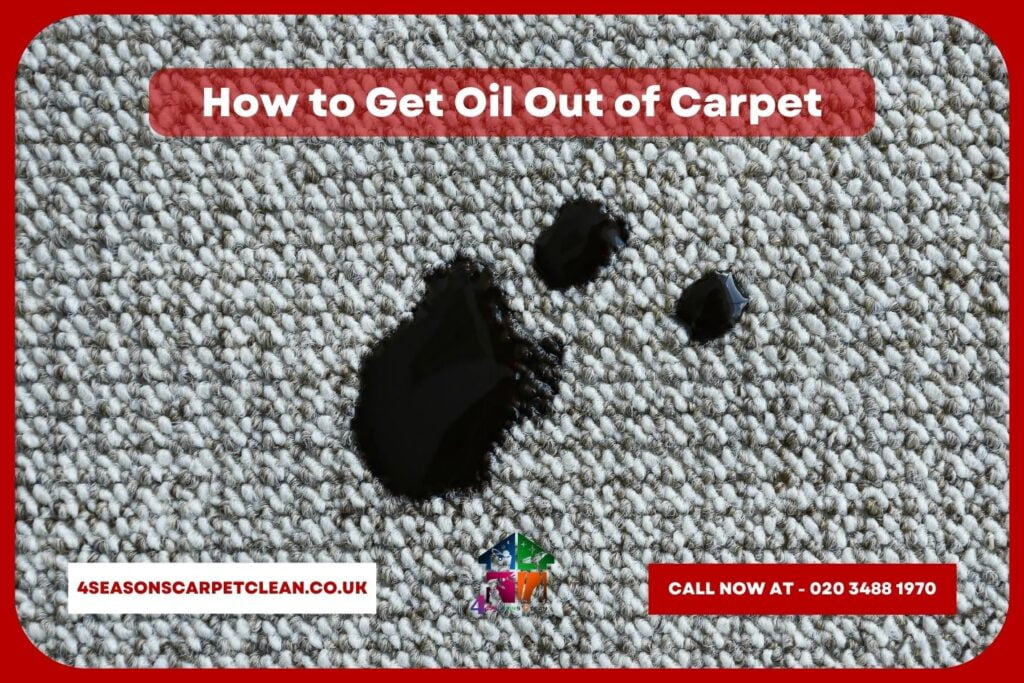
How to Get Oil Out of Carpet
Oil stains can be tricky, but these steps can help:
Using Cornstarch
- Act Quickly: Blot the oil stain with an absorbent dry cloth.
- Apply Cornstarch: Sprinkle cornstarch on the stain to absorb the oil.
- Vacuum: Remove the cornstarch with a vacuum cleaner.
- Clean: Wash the area with water and dish-washing detergent.
Using Dry Cleaning Solvent
- Apply Solvent: Use a clean cloth to apply the solvent to the stain.
- Blot and Dry: Blot the solvent with a damp cloth and let the area air dry.
- Repeat if Necessary: If the stain remains, repeat the process.
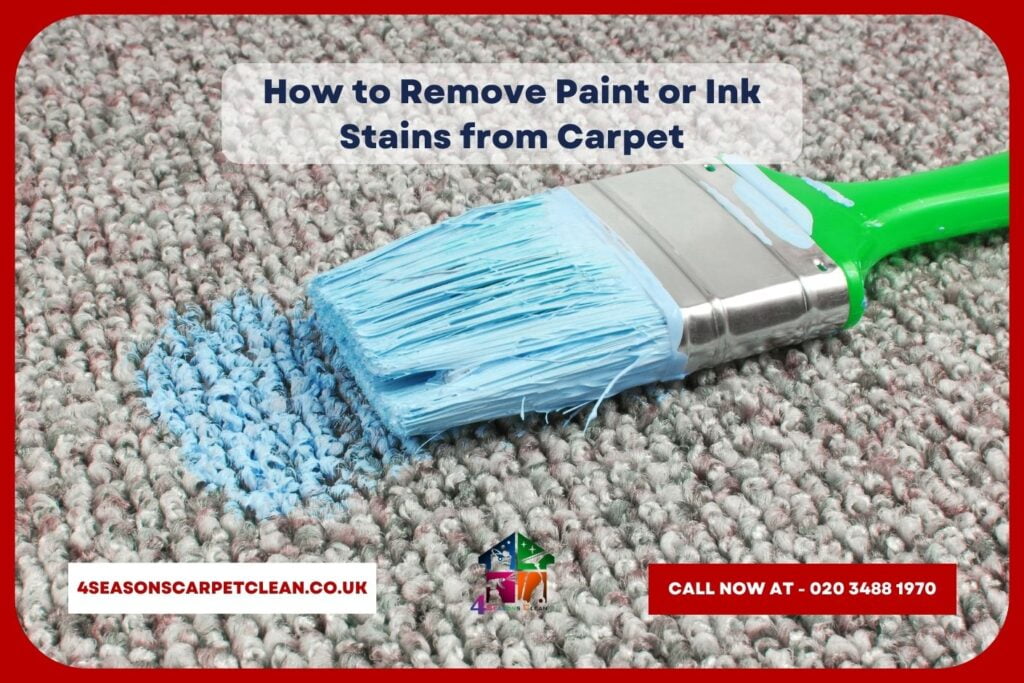
How to Remove Paint or Ink Stains from Carpet
Quick action is crucial for paint and ink stains:
Using Homemade Solutions
- Moisten with Alcohol: Blot the stain with a cloth moistened with rubbing alcohol.
- Dab and Wait: Re-wet the cloth and dab the area, letting the alcohol sit for 30 minutes.
- Rinse: Rinse with a solution of white vinegar and warm water.
- Dry and Vacuum: Rinse with clean water, let dry, and vacuum.
Using Commercial Products
- Soak Up Immediately: Use an absorbent material to soak up the paint or ink.
- Apply Stain Remover: Pour carpet stain remover on the stain, spray with water, and blot with a sponge.
- Avoid Paint Thinner: Do not use paint thinner as it may damage the carpet.
- Machine Clean: Use a carpet cleaning machine if necessary.

Professional Carpet Cleaning Methods
For those who prefer to leave carpet cleaning to the experts, professional methods offer thorough and effective solutions:
- Hot Water Extraction: This method uses high-pressure hot water to dislodge dirt, which is then sucked up along with the water.
- Dry powder carpet cleaning is perfect for wool carpets. You use a dry cleaning powder that absorbs dirt and then vacuum it up.
- Absorbing: The technician sprays a specialized product on the carpet, crystallizing dirt for easy vacuuming.
Home vs. Professional Carpet Cleaning: A Comparison
When it comes to cleaning carpets, you have two main options: DIY or professional services. Each has its pros and cons, and the best choice depends on your specific needs.
DIY Carpet Cleaning
Pros:
- Cost-Effective: DIY methods are generally cheaper than hiring professionals.
- Convenience: You can clean your carpet on your own schedule.
Control:
You know exactly what products are being used on your carpet.
Cons:
Time-Consuming: Cleaning carpets yourself can be a lengthy process.
Effectiveness:
- DIY methods may not be as effective at removing deep stains and dirt.
- Risk of Damage: Using the wrong products or techniques can damage your carpet.
Professional Carpet Cleaning
Pros:
- Deep Cleaning: Professional methods like hot water extraction provide a thorough clean.
- Efficiency: Professionals can clean your carpets quickly and effectively.
- Expertise: Trained technicians know how to handle different types of stains and carpets.
Cons:
- Cost: Professional cleaning services can be expensive.
- Scheduling: You need to arrange a time for the cleaners to come to your home.
Chemical Use:
Some professional methods use strong chemicals, which may not be ideal for all households.
Specific Stains Best Removed by Professionals
While many stains can be tackled at home, some are best left to the pros:
- Red Wine Stains: These can be particularly stubborn and may require professional-grade cleaning solutions.
- Pet Urine Stains: These stains alter the color of your carpet and produce difficult-to-remove odors. You need professional tools to effectively eliminate these odors.
- Ink Stains: While minor ink stains can be treated at home, large or set-in ink stains often need professional attention.
- Grease and Oil Stains: These can be challenging to remove completely without the right solvents and techniques.
- Blood Stains: Blood can be tough to clean, especially if it has dried. Professionals have the right tools to handle these stains effectively.
Conclusion
Maintaining a clean carpet is not just about aesthetics; it also contributes to a healthier home environment. With these DIY methods and professional options, you can tackle any carpet stain with confidence. For more tips and professional services, visit our main site or contact us at 020 3488 1970.

